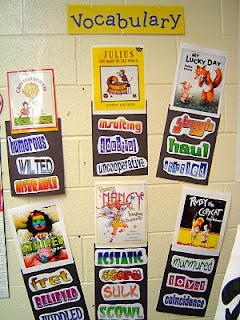The articles
from this week’s reading consistently stressed the importance of improving
teachers and the methods of teaching that they use. While I agree that there
are many changes that need to be made in our system of education, some of the
significant changes that I believe need to be made seem to be absent from the
various lists of “educational improvements”. There are many teachers who could
benefit from reading the article, “Every Child a Reader: What One Teacher Can
Do” by Gay Su Pinnell. This well-written and informative article presents eight
required actions for teachers:
1. Learn
about learning
2. Put your
theory into action
3. Establish
inquiry as an integral part of your reading
4. Use
research-based practices and put extra energy into making them work
5. Put your
theory to work in the classroom
6. Take
every opportunity to create community
7. Enjoy
reading and writing with your students
8. Imagine a
future and work toward it
All eight of
these steps play a key role in the literacy education of students, but there
seems to be a piece missing. Many teachers seem to lack this piece, but there
is not a step you can take to easily fix this. Today, it seems like many
teachers lack the driving motivation to teach that is usually fueled by the
relationships they have with their students. To me, the difference in a good
and bad teacher is not the way that they teach a lesson but how they interact
with their students. When teachers lack this “desire to know and understand
their students” that I am referring to, students may learn the material but are
they benefitting as much as they could from this education? My answer is no.
Teachers serve as constant role models for the students they teach, whether or
not they realize this, and it is important that we have teachers in place that
are willing to inspire and engage with their students.
1. Do you agree/disagree?2. What do you believe are the most important characteristics of a good teacher?















